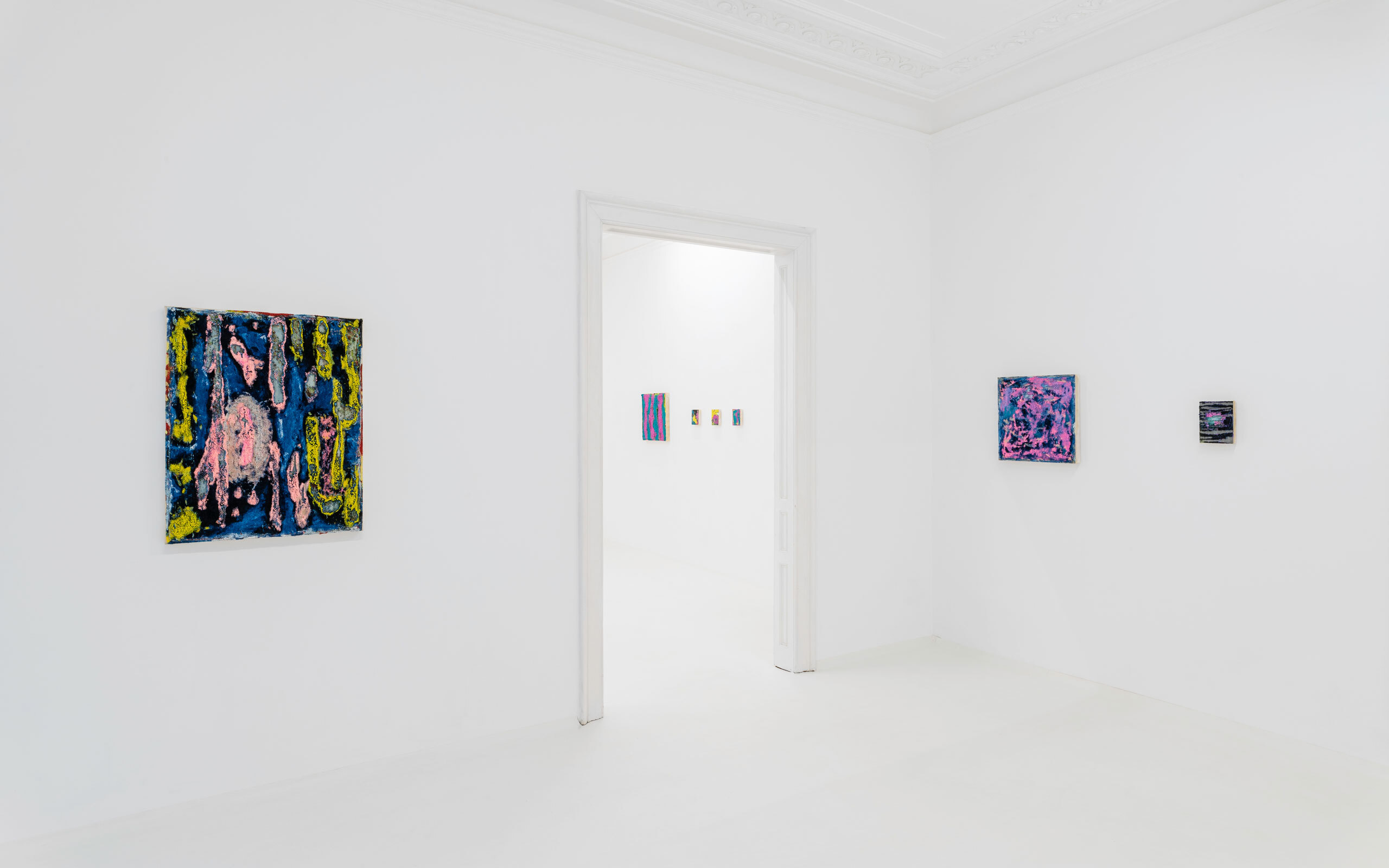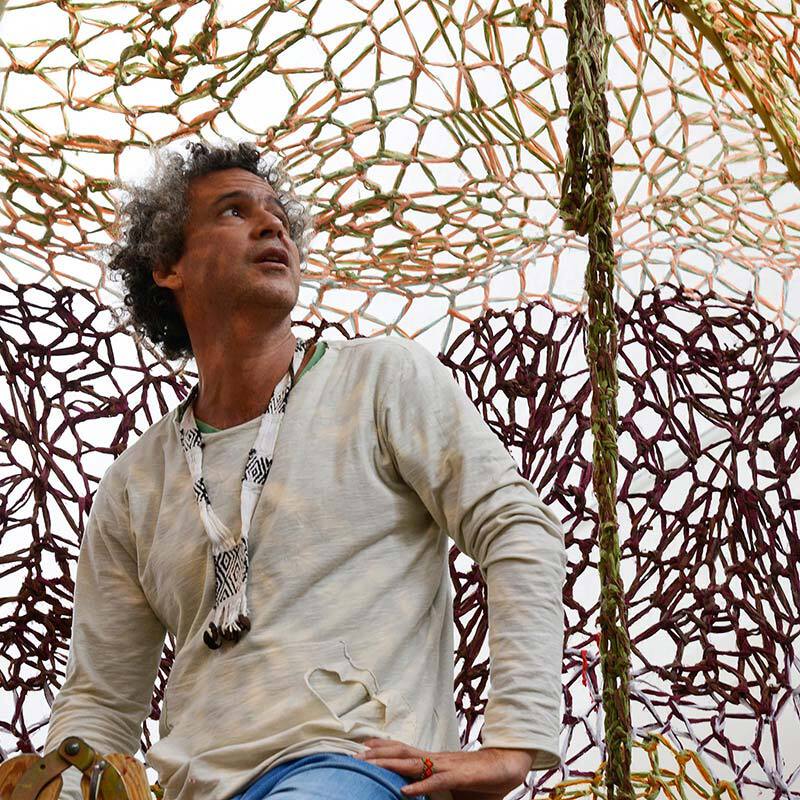The paintings of Dejan Dukic take on an abstract, shifting, and unrecognisable form. At first the painting’s surface may be confused with the hardening of a fibre, a mollusc, lichen, a grid, a cityscape, or some organic form adhering into a composition. This plurality and scope emerges from Dukic’s constant experimentation with material that follows long investigations into tactile visualisations. The forms are an expression of abandonment to material, the ability to shake off artistic control in favour of collaboration with the tools of the artist – in this case, casting off the easel, paintbrush, and palette in favour of the base symbolic and historically loaded materials of painting – paint and canvas.
Dukic works with painting in an unexpected way – one that inverts and aims to reclaim the tactility of production rather than producing a virtual image. The theory of painting has long considered the canvas as threshold and the image as virtuality. 1 An image usually aims to create a window to an ‘elsewhere.’ But Dukic’s paintings are grounded in the materiality of the image, they contemplate the nature of the reaction between paint and canvas which has been deliberately obfuscated. The materiality and hand of the artist is deployed literally, through prolonged contact and gestural trace on the textile surface of canvas. Anni Albers’ focus on the historical aspect of textile were a philosophical rejection of visual supremacy over tactile knowledge as she wrote in “Tactile Sensibility”:
“But we certainly have grown increasing insensitive in our perception by touch, the tactile sense. No wonder a faculty that is so largely unemployed in our daily plodding and bustling is degenerating. Our materials come to us already ground and chipped and crushed and powdered and mixed and sliced, so that only the finale in the long sequence of operations from matter to product is left to us: we merely toast the bread.” 2
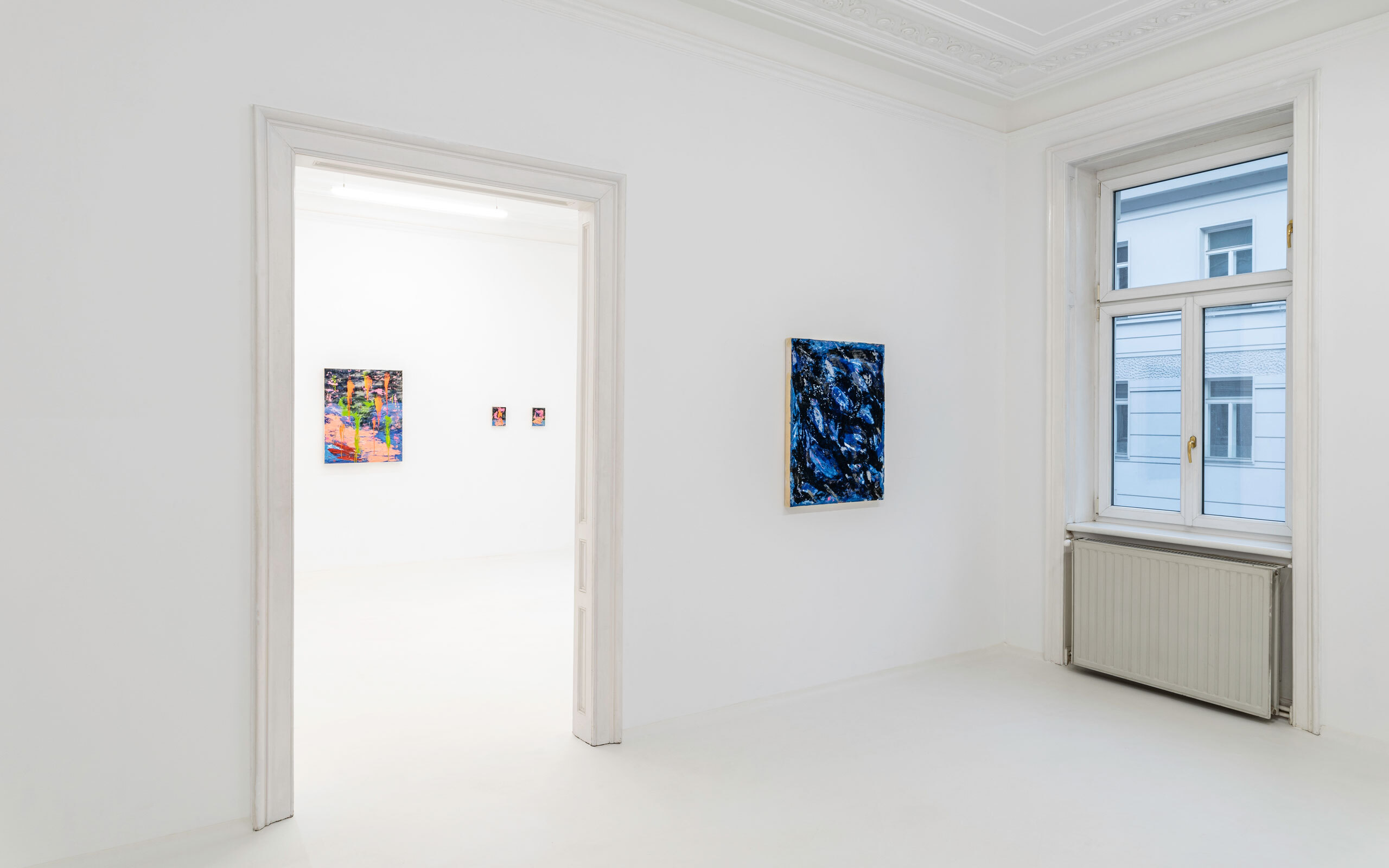
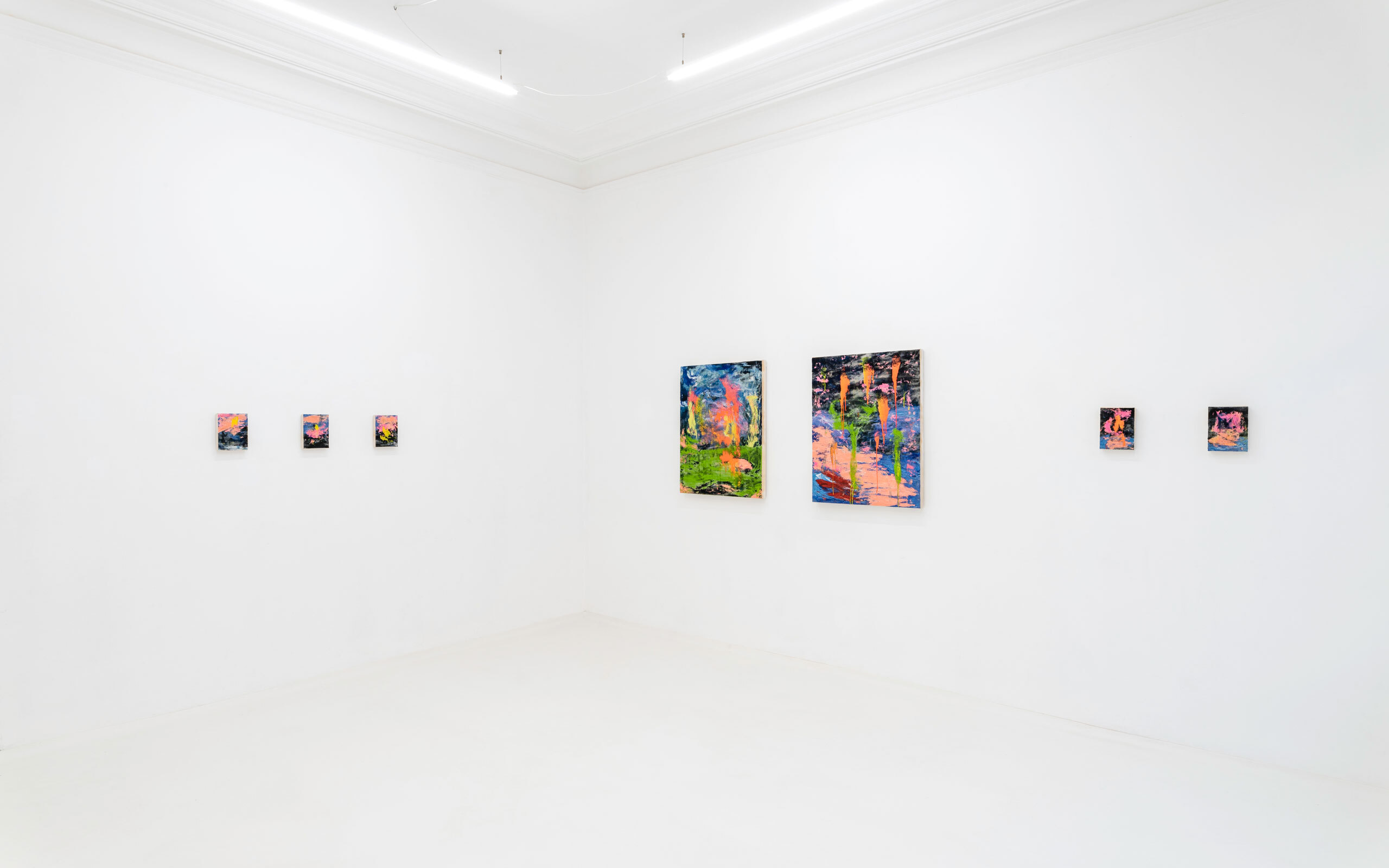
To start the painting process, Dejan Dukic begins at the handmade production of paint. Crushing pigments and mixing in just the right amount of oil achieves the desired thickness and colours. The selection of canvas is done just as meticulously, with regard for the thickness of threads, the quality of material, durability, and porosity. The classic combination of paint and canvas, is about to enter a new material relation, an inversion of contact, and a destruction of the virtual threshold. The paint is not applied to the front, or “viewable” side of the canvas, but rather worked from behind, laden and pushed through with pressure and force through the fibres of the painting’s body.
His attention to the back of the canvas is peculiar as in traditional painting the canvas is a support for the image while being an integral component. Derrida describes these invisible elements that can be reduced only to the necessary structural elements as Parerga in his famous essay from 1979. 3 And Dukic’s focus on the verso of the canvas strikes a note with Rodolphe Gasché’s expose of reflexivity in Derrida’s work The Tain of the Mirror 4 – the tain is gritty reverse of the mirror, unpolished and unable to reflect while the front of the mirror is a surface which displays a virtual world, an image which is not truly there and transports you to another world.
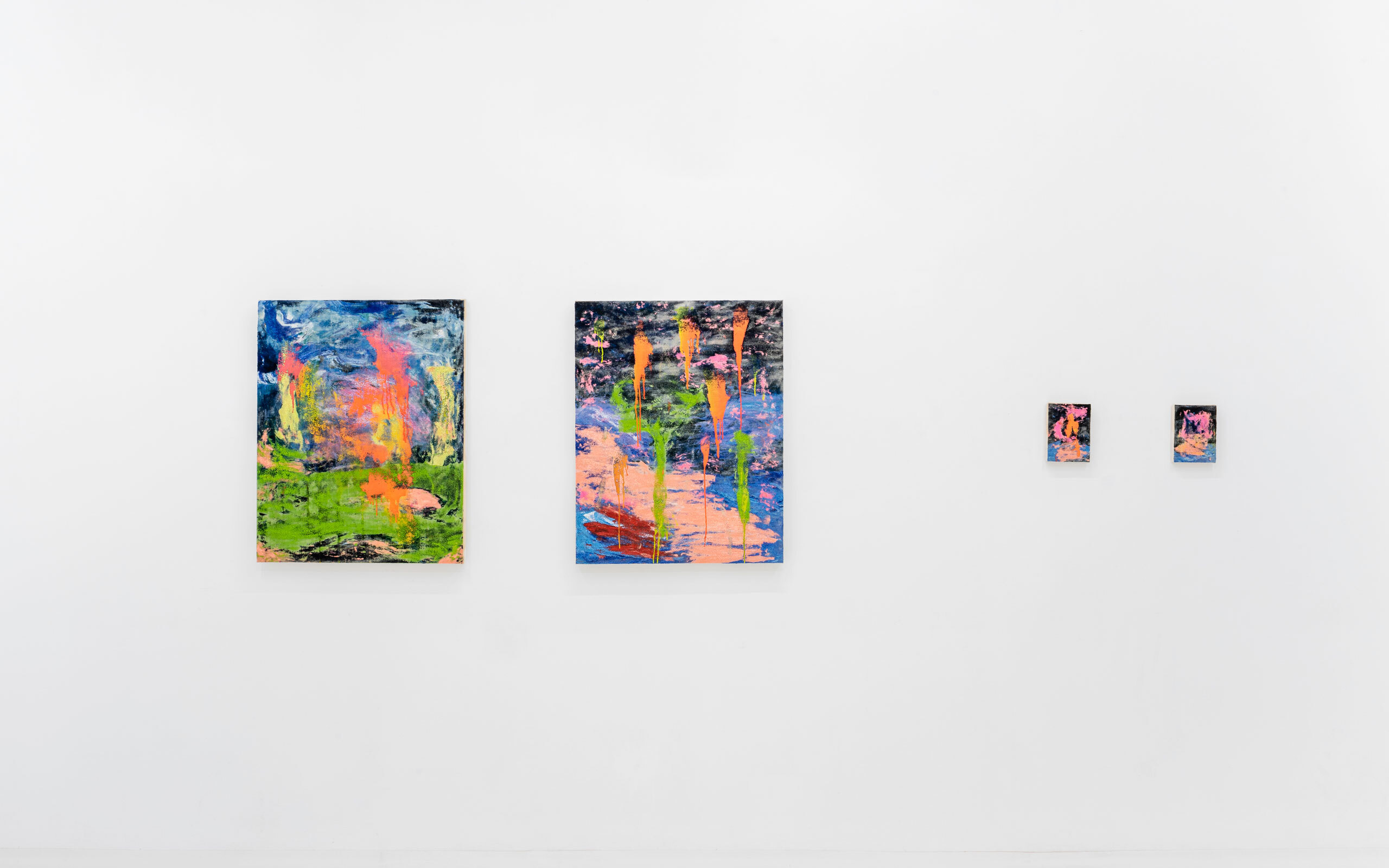
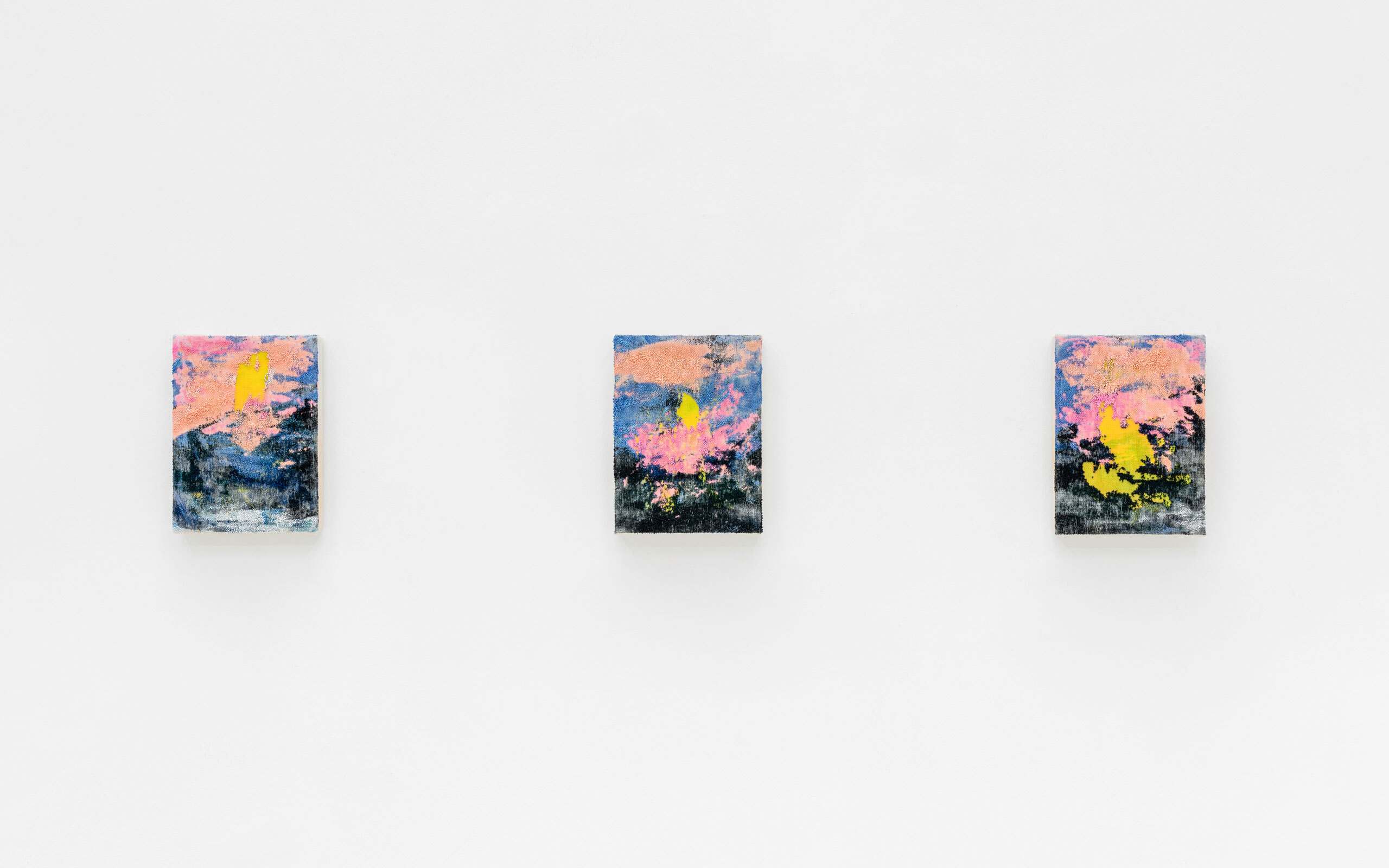
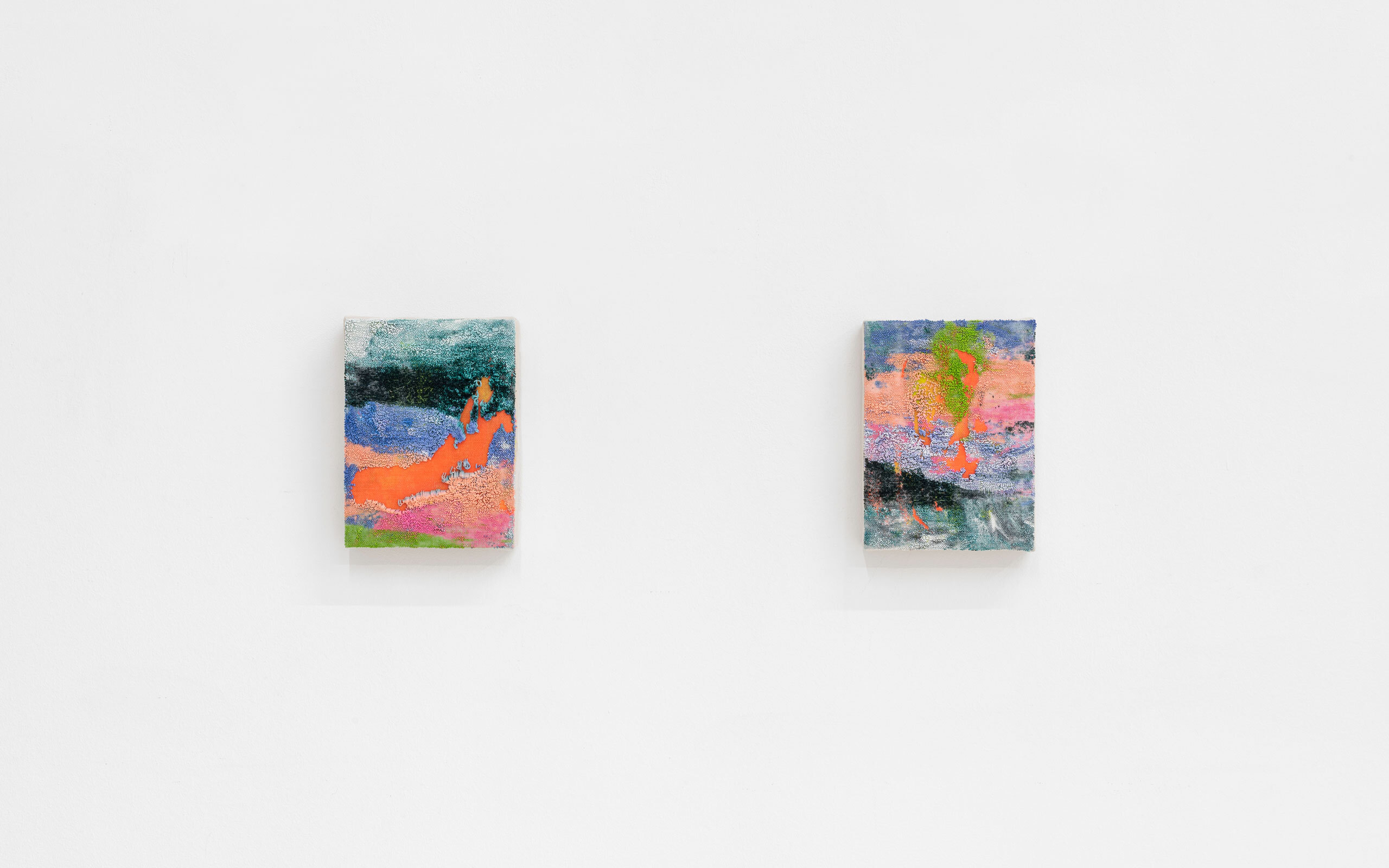
In an art historical arc Dukic’s process reckons back to Lucio Fontana’s irreverent slashing of the surface and access to the canvas’ metaphorical tain in the series Concetto Spaziale. Dukic’s surface is not slashed violently by a knife, but by the oil itself that is applied traditionally to any canvas – it squeezes and permeates, punctures and seeps into the metaphysically separate front of the canvas. This not only comments on the dematerialised relationship between painters and their materials, but also on the cohabitation with paint as a sensitive being. For Dukic never sees the front, or “visible” side of the canvas while he works – he does the labour of massaging the paint through and allows the paint itself to adhere in patterns of chance and emerge in its own gestural forms.
Decades before Fontana, Duchamp had already formulated the “aesthetics of chance.” 5 For the Dadaists, chance was a method with which to distance art from control of the author in the spirit of experimentation. In today’s lexicon, experimentation with chance is related to concepts of non-human agency. Following this line of thought, we can say that Dukic’s experiments with chance relate to the forgoing of authorial and artistic control in favour of the free expression of materiality.
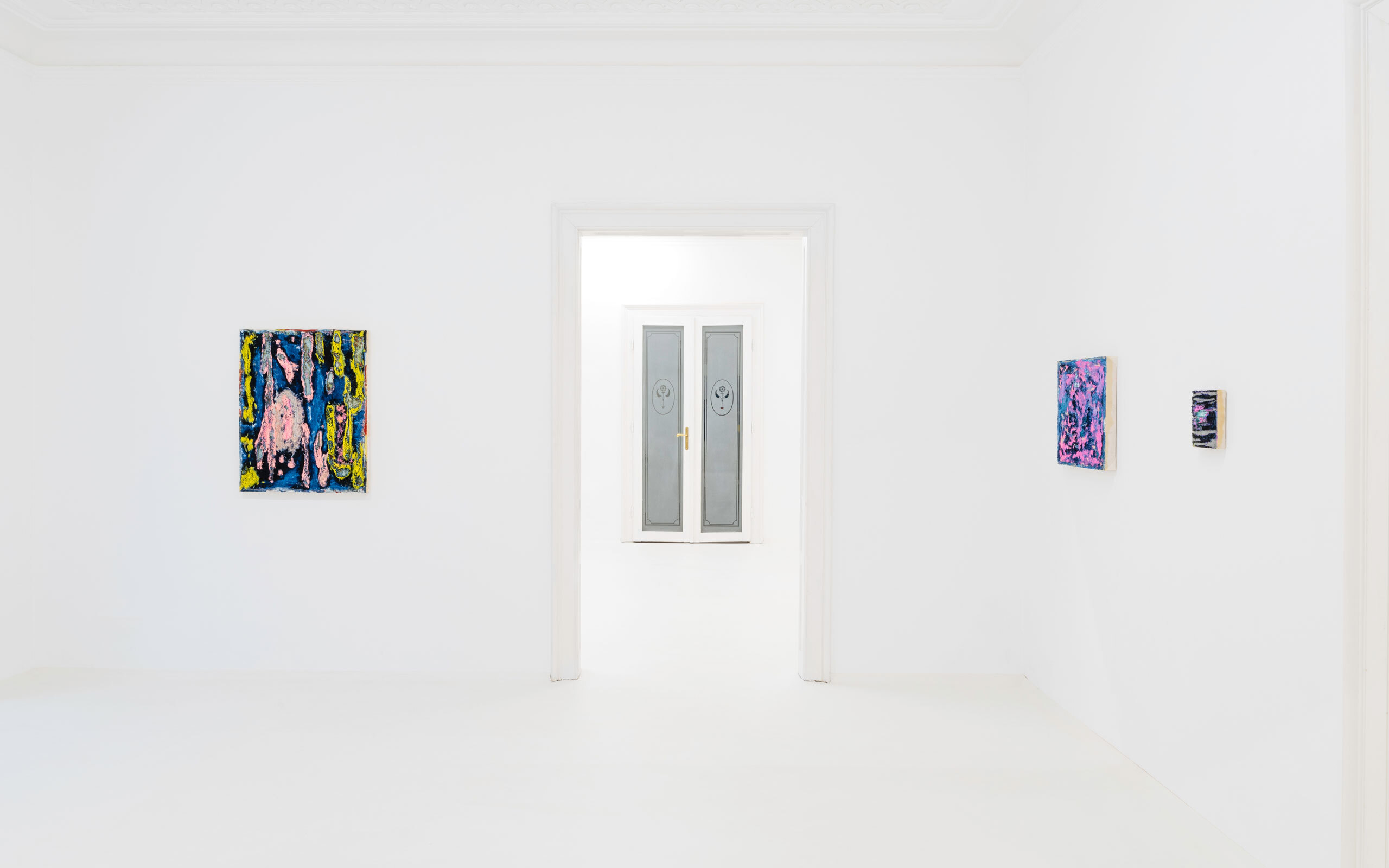
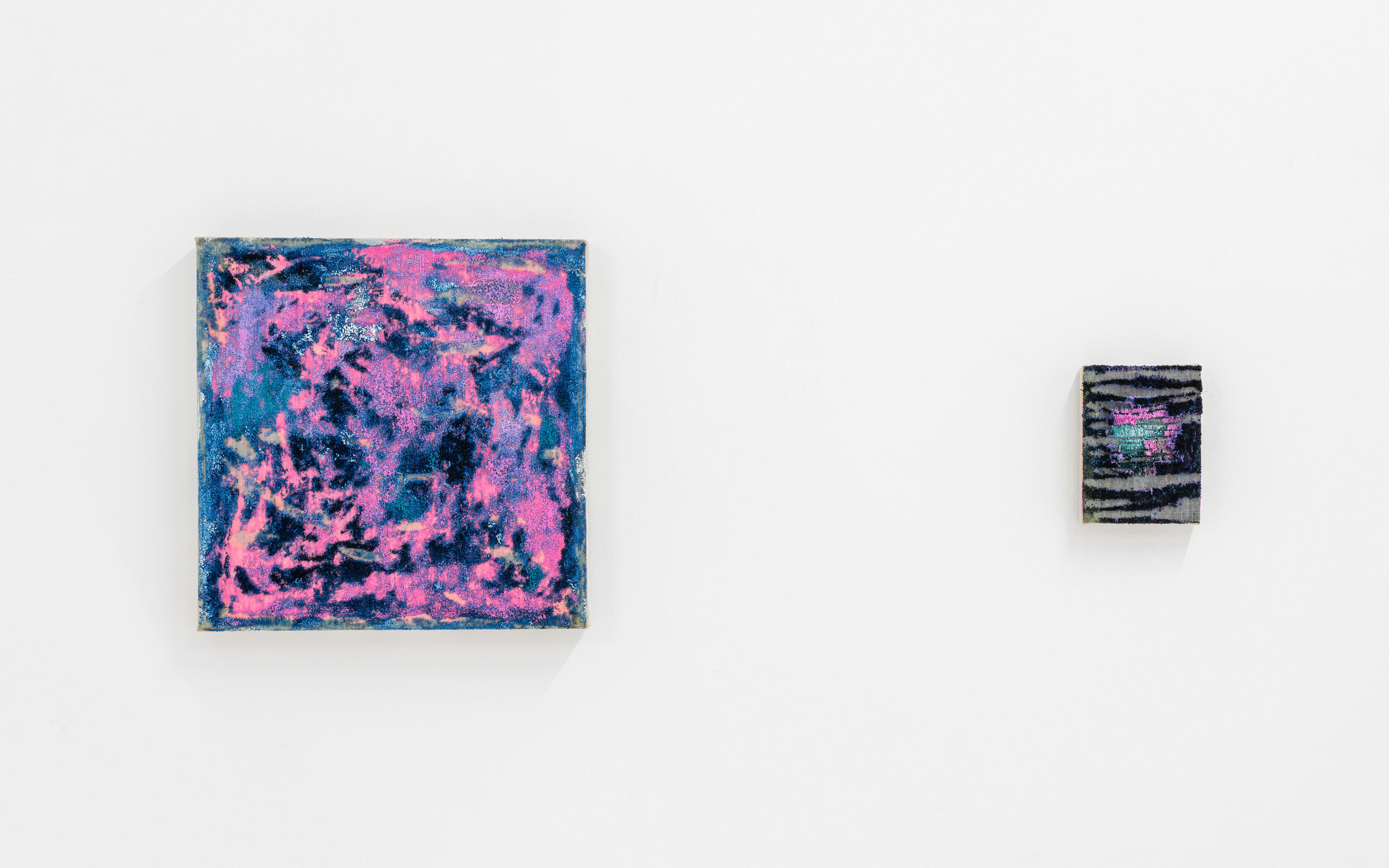
What appears on the front of the canvas are the result of fine particles of paint passed through the canvas as if through a sieve. Filaments curl or dangle appearing like threads or wet hair, lichens, or sometimes, as thick conglomerate cubes. As the paint dries and hardens it assumes its shape in a tough and durable form that defies the visual quality of what otherwise would appear like a wisp of fragile protrusions. The material retains its liquidity in its final form, “untouched” by a human hand once it passes through the visible threshold – the result is a non-human occurrence. And one that retains its wet condensed weight.
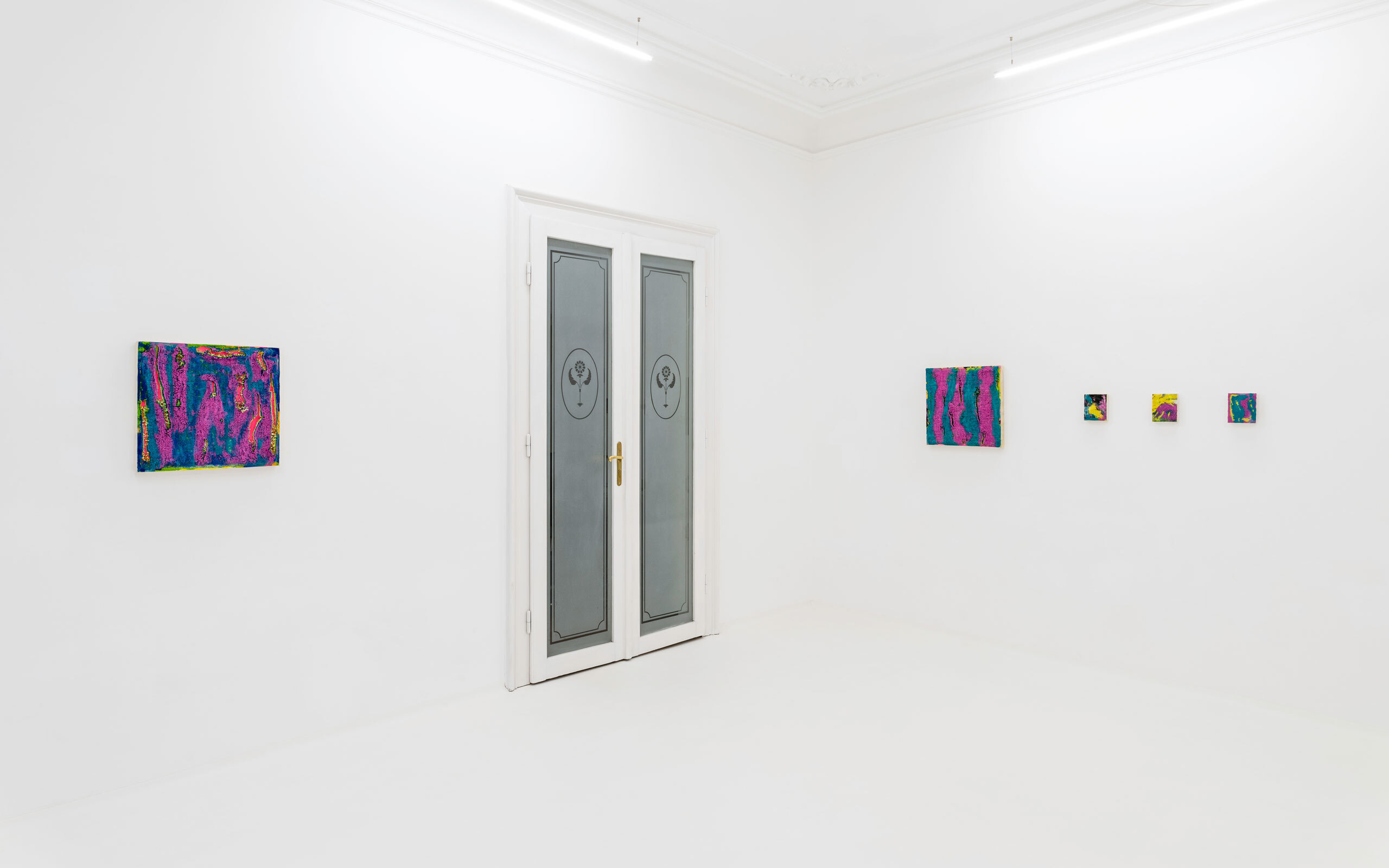
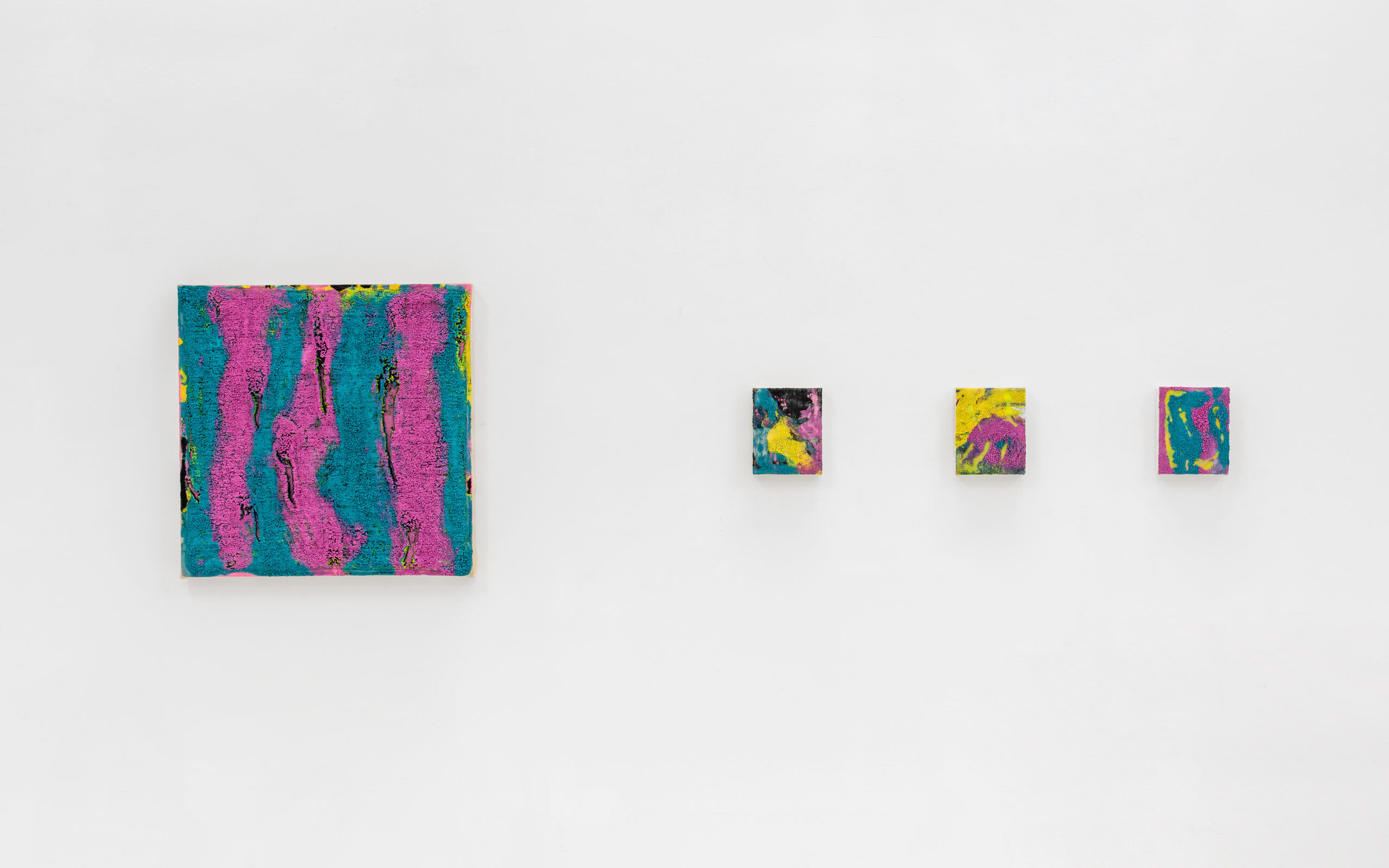
The weight of the canvas is expected to be light as virtual figurative paintings use little paint to cover a surface. But thick impasto paintings and Dukic’s rich bodies of paint make the canvas gain more than a visual and conceptual premise. They also comprise a physical weight that drives the message home. To return to haptic knowledge through painting is significant in an environment where images are increasingly dematerialised. The importance of contact in artistic work, of experimentation, and the aesthetics of play are described by Amy Sillman in her essay “On Color”:
“Recently an Art Historian and I surprised each other: I told him that even if I were blindfolded I would know whether I was holding a tube of cadmium red or a tube of cobalt violet because of their difference in weight. He didn’t know this. He had never held pigment in his hands, and didn’t know that cadmium red is heavy and cobalt violet is light.”6
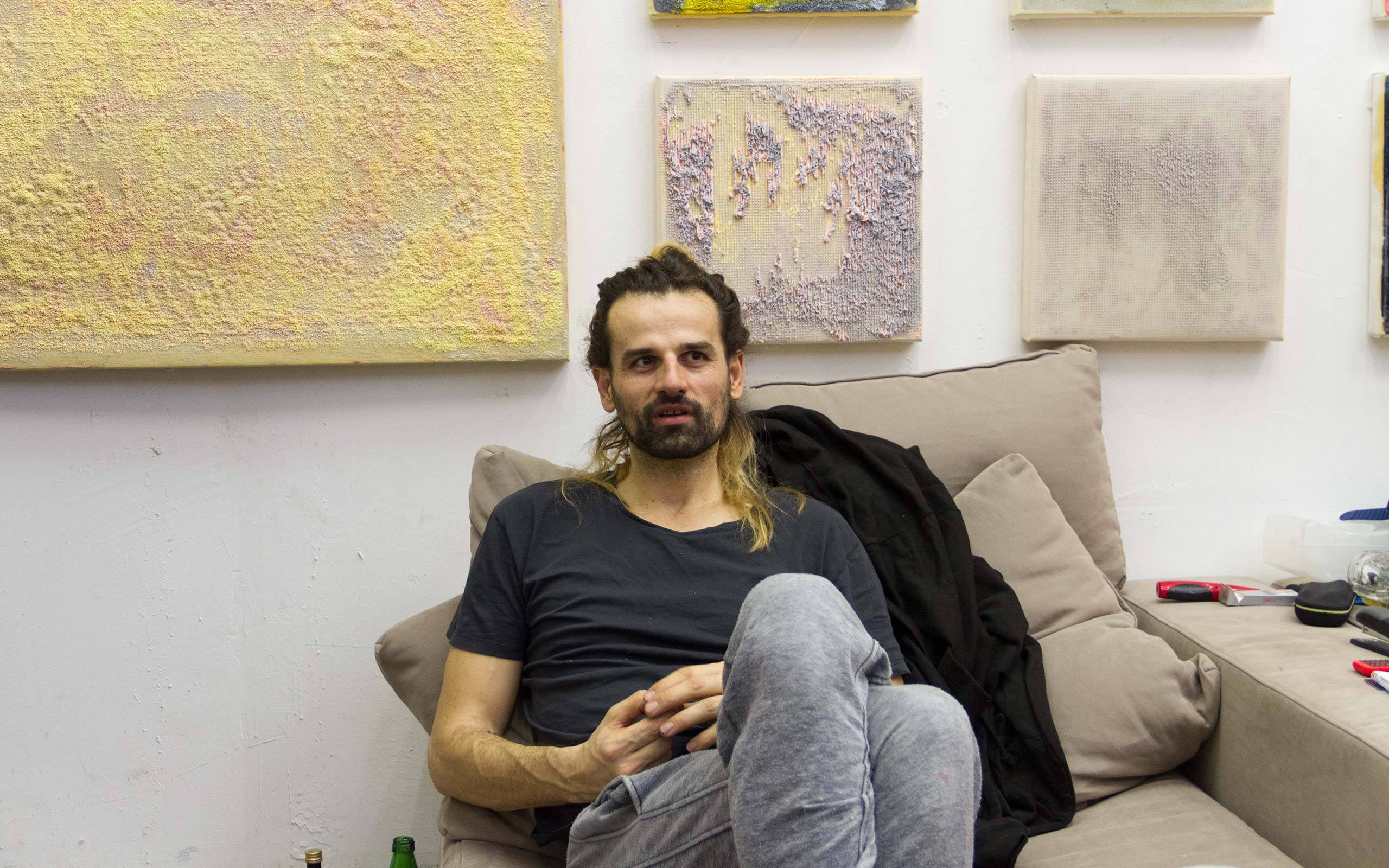
The weight of the canvas is typically only known to painters as curators increasingly look at works of art in digital matters and are decreasingly in the practice of installing art themselves. The contradiction of our times is that we live in a world where connection to material reality, to nature, and production processes are theoretically important in ecological ethics, while we progressively perceive and work more through virtual and de-materialised realms.
In the canvases of Dejan Dukic we can speak easily about symbolism, about gesture, and motion, but always relating to material rather than human control. Dukic is the author of a framework that conducts the paint in a certain way, while allowing it to flow, rebel, and breathe. At the end of the day, the paintings mark a philosophy of cohabitation with the world that includes the notions of the importance of letting go, and the aesthetics of play. An ethic that relates to the post-Anthropocene world- view of civilisation taking a step back from notions of ownership and absolute control. All of this is expressed in a minimal and simple gesture – a subtle inversion of the very principles of painting in the history of art.
Text: Àngels Miralda
Photos: Simon Veres
1 Anne Friedberg, The Virtual Window, The MIT Press, Cambridge MA, 2006. “The frame becomes the threshold... But the frame also separates the materiality of spectatorial space from the virtual immateriality of spaces seen within its boundaries.”
2 Anni Albers, On Weaving, Studio Vista Publishers, London, 1965
3 In his essay, he claims that parerga are the components that are inextricably part of the art object without being art itself - neither inside nor outside. . Jacques Derrida, “The Parergon,” October, Vol. 9 (Summer, 1979)
4 Rodolphe Gasché, The Tain of the Mirror: Derrida and the Philosophy of Reflection, Harvard University Press, Cambridge MA, 1986
5 Herbert Molderings, Duchamp and the Aesthetics of Chance: Art as Experiment, Columbia University Press, New York, 2010
6 Amy Sillman, „On Colour“, https://www.amysillman.com/pages/writing_1. php
Links:


